You can’t keep a good horror-movie antagonist down. You may defeat the monster and vanquish your fears, but you can’t kill the undead. It always rises again, maybe to terrify someone else instead of you, but it will be waiting and lurking, as sure as light creates shadow.
Maybe that’s the reason so many horror films generate franchises. In the supernatural realm, where ordinary rules of logic and physics don’t apply, the writers can always find some excuse to bring the demon back and make the nightmare a recurring one. Okay, there’s also the fact that sequels are easier to conceive than originals, and that they’re lucrative, but that’s because audiences crave familiarity, even when they’re being shocked and frightened. The sequels keep offering diminished returns, and yet we keep buying the tickets, in the hope that something will scare us the way the first installment did, when we truly didn’t know what was hiding there in the dark.
Check out the list below of some of the most terrifying and enduring horror franchises ever.
Warning: Many of the clips that follow are NSFW.
The Evil Dead
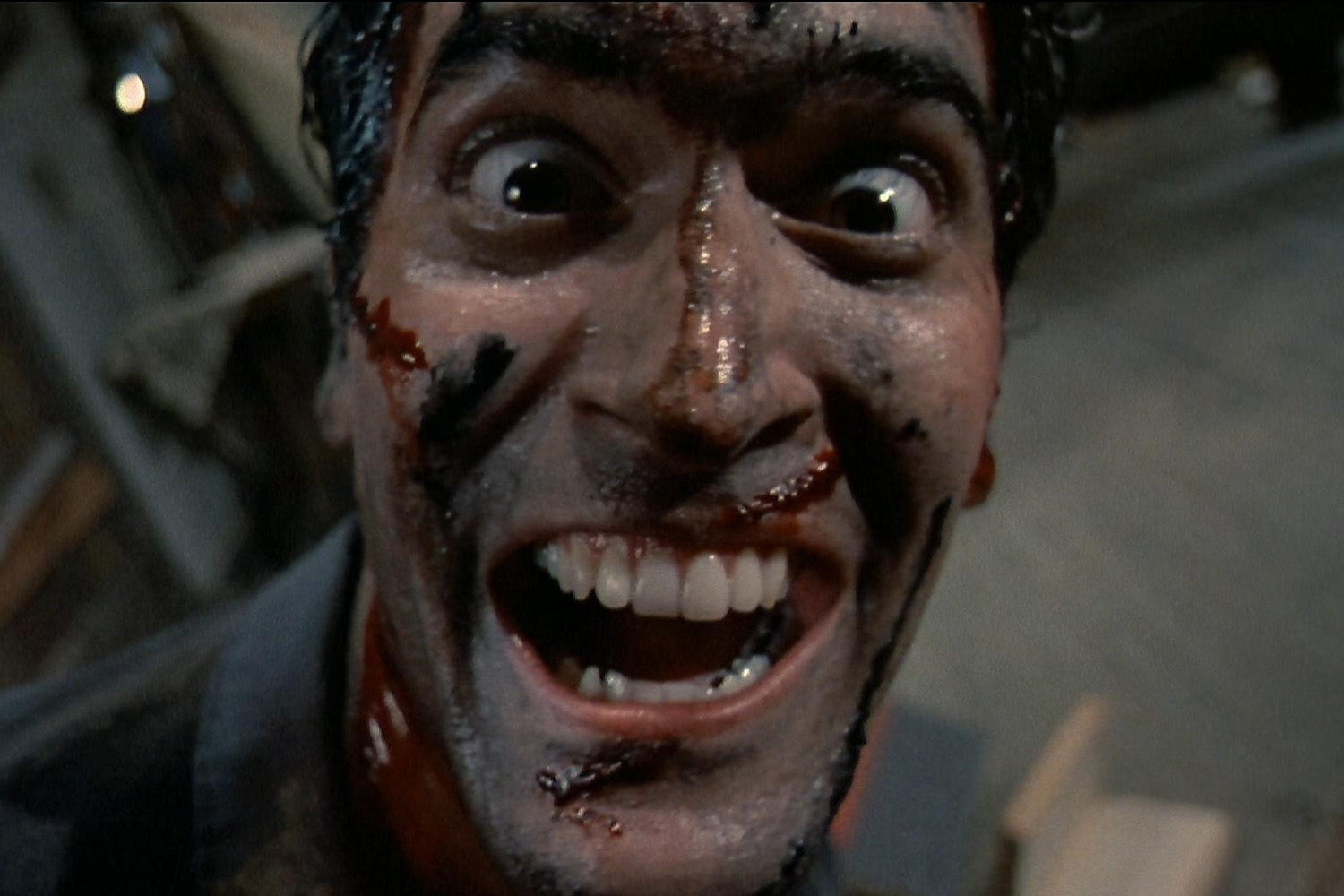
The initial Evil Dead is a marvel of low-budget filmmaking, of ingenuity triumphing over lack of resources. It’s most surprising monster is a tree, and its most terrifying effect is generated by a camera mounted on a two-by-four, with a guy holding each end of the beam and running through the woods. The film moves at a relentless pace, unleashing increasingly gruesome shockers every few minutes.
An archetypal college-kids-at-a-cabin-in-the-woods tale, Evil Dead was the calling card to Hollywood for a then-unknown Sam Raimi (who’d eventually go on to make the first Spider-Man trilogy and Oz the Great and Powerful). He essentially remade the movie as Evil Dead II: Dead by Dawn, with a bigger budget and the same protagonist, chainsaw-handed Ash (the invaluable Bruce Campbell), followed by an out-of-left field third installment, Army of Darkness, that saw Ash transported to medieval Europe to fight more demons.
The series was rebooted this year, with Raimi and Campbell’s blessing, but the new Evil Dead, while surely the goriest of the lot so far, lacked the amateurish, homemade charm of the original.
Warning: This clip may not be safe for work
Final Destination
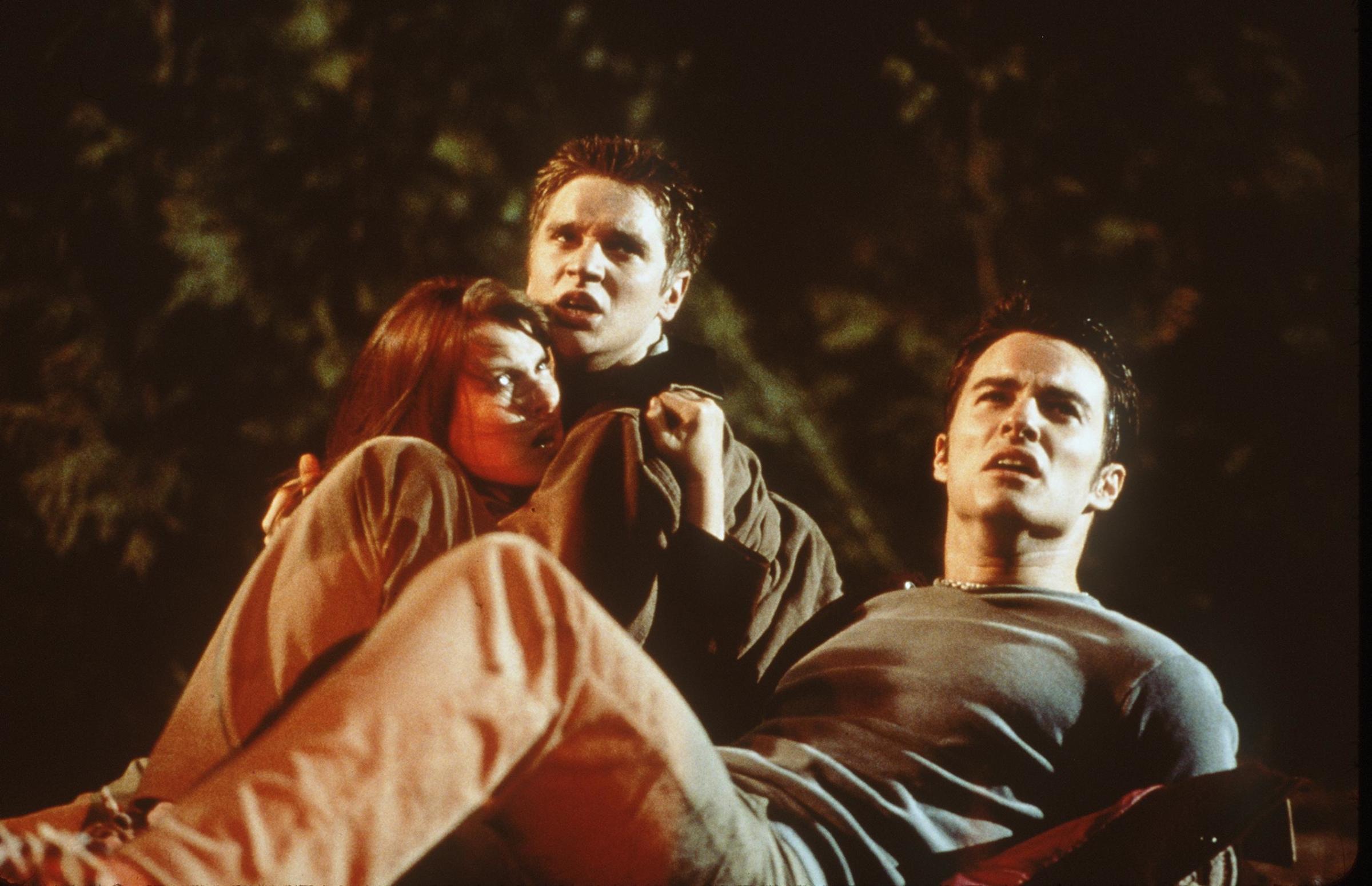
Here’s a series that remains reliably scary because its Big Bad is the Big Kahuna himself, the Grim Reaper. Sure, the formula is the same — some youngster has a premonition that a group of pals are about to die in a horrible accident. They’re saved briefly, but Death will not be denied, and stalks the surviving teens one by one, claiming its due. The inventive part comes via the elaborate Rube Goldberg-ian processes by which Fate turns seemingly benign arrangements of random objects into sources of horrible freak accidents.
In a way, Death is an even better monster than Jason (Friday the 13th), Freddy (Nightmare on Elm Street), or Michael (Halloween) – it’s just as implacable and impervious to bargaining, reasoning, and negotiation, but what’s more, it can’t even be seen or spoken to. And it doesn’t dispense tasteless wisecracks every time it claims a new victim. Really, there’s no reason they can’t keep making these movies forever, since Death is the one horror movie baddie that really will never run out of victims and that actually will come one day for us all.
Warning: This clip may not be safe for work
Friday the 13th
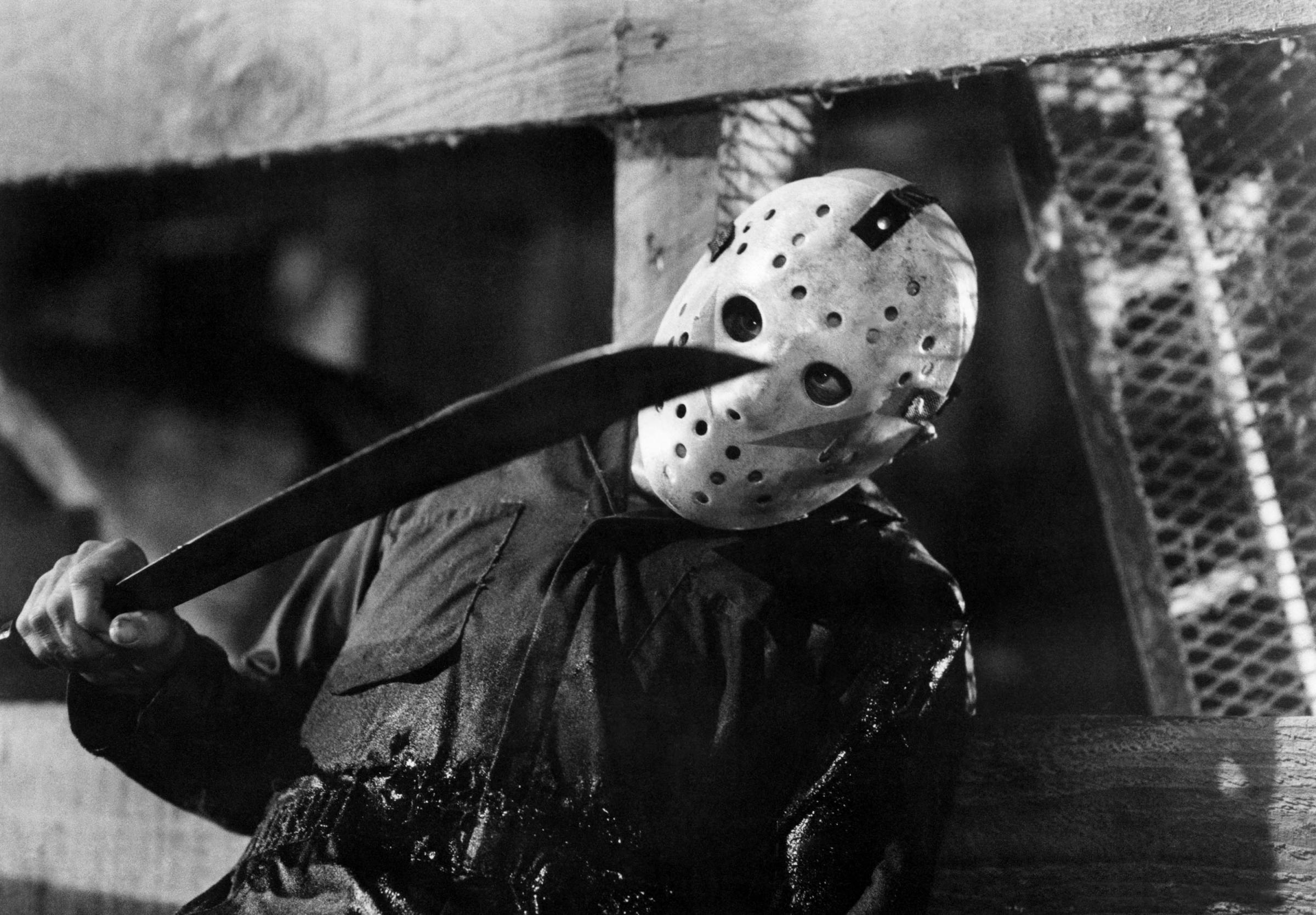
Nearly everything about this series seems cribbed from the Halloween movies. There’s the silent, masked killer Jason Voorhees (his visage of choice is a hockey mask) who’s as unstoppable as a Terminator; there’s the urban-legend backstory (in this case, a summer camp ghost story), and there’s even the fateful day mentioned in the title (in this case, one that often occurs more than once a year, unlike Halloween).
Yes, there are a few novel wrinkles (the killer in the first movie turns out to be not Jason but rather his mother; Jason’s having been left to drown in Crystal Lake as a child makes that body of water his sole weakness), but otherwise, Jason is pretty much the same stalker of teen miscreants that Michael Myers is.
Still, he proved so durable that one installment even sent him into space. Even Freddy Krueger found him to be a badass in the first inter-franchise match-up, Freddy vs. Jason, fighting him to an apparent draw. Like Michael, he’s always just one lightning bolt away from being resurrected and resuming his murderous ways.
Warning: This clip may not be safe for work
Halloween

The horror franchise that pretty much wrote the rules for all horror franchises to follow. There’s the implacable killer, of course, Michael Myers, who, despite some lame attempts to psychoanalyze him, is simply pure evil, a seemingly unstoppable killing machine. Yeah, he’s wearing a William Shatner mask, he never speaks, he tends to show up around October 31, and he bears an unspecified grudge against his sister, Laurie Strode (Jamie Lee Curtis) that makes him come after her again and again, but those are just idiosyncrasies. (He could have come on Arbor Day and been just as scary.)
Really, no one is safe from Michael, but especially not randy and misbehaving teenagers. As with many horror franchises, the scariest is still John Carpenter’s original, with its many hat-tips to Alfred Hitchcock’s Psycho (including the casting of Curtis, succeeding her mom, Psycho star Janet Leigh, as the scream queen for a new generation). Nonetheless, it’s hard not to shake the fear that the unstoppable Michael is still out there, waiting for the next reboot.
Warning: This clip may not be safe for work
Hellraiser
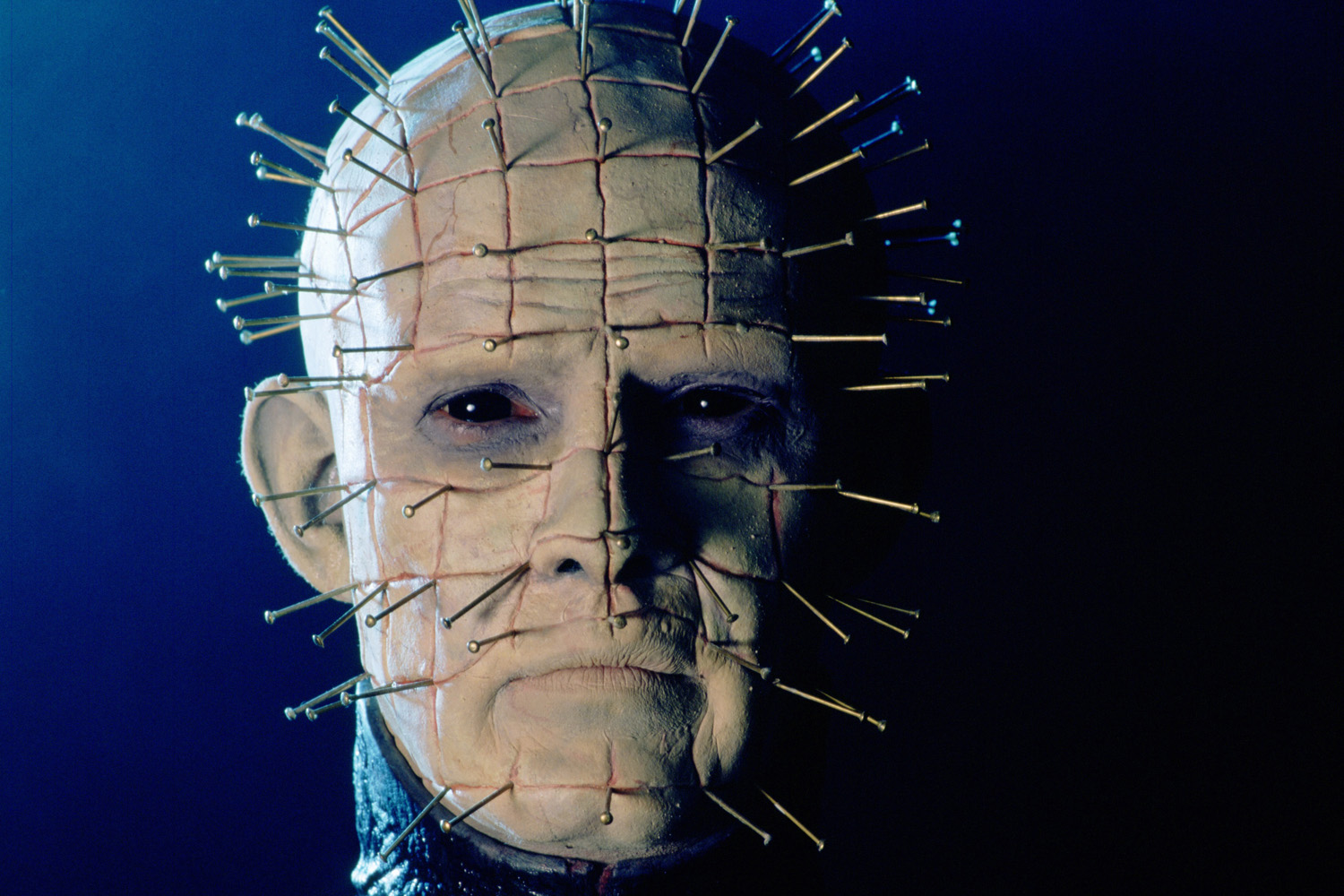
The creation of horror author Clive Barker, the Hellraiser movies offer a novel twist on the usual slasher fare. Here, the menace is Pinhead (Doug Bradley), a guy with a face like a porcupine, who’s actually part of a race of demons called Cenobites, summoned to our earthly plane by unwitting mortals playing with an antique puzzle box. Pinhead and his minions come not just to torture your body but to ravage your soul as well, so killing you is just the beginning of your torments.
Like other slashers, Pinhead tends to visit people who are deserving of punishment on some level, either because of their avarice, lust, or hunger for power, or just because they’re stupid enough to play with the damned box. At lest the box can be used to send Pinhead and the Cenobites back to perdition as well. So far, there have been nine Hellraiser films, five of which went straight-to-video. No telling how long it will be (if ever) before some new filmmaker opens the puzzle box yet again.
Warning: This clip may not be safe for work
Night of the Living Dead

George A. Romero invented the zombie genre as we know it with this 1968 classic. One could argue that it’s that initial film that’s the only truly scary one, and that the five sequels to date are merely satirical variations. Indeed, thanks to Romero, social satire and allegory is built into the very DNA of the zombie genre, and follow-ups like Dawn of the Dead and Day of the Dead offer wry takes on consumerism or the politics of xenophobia that resonate beyond the shocks and jolts and perhaps even overshadow them.
Still, by the time you have whole armies of zombies marching, bent on eating flesh and destroying civilization as we know it – well, that has to give you at least a little pause. Besides, these brain-chompers are the inspiration for 28 Days Later, The Walking Dead, and World War Z, so give them some undying love.
Warning: This clip may not be safe for work
A Nightmare on Elm Street
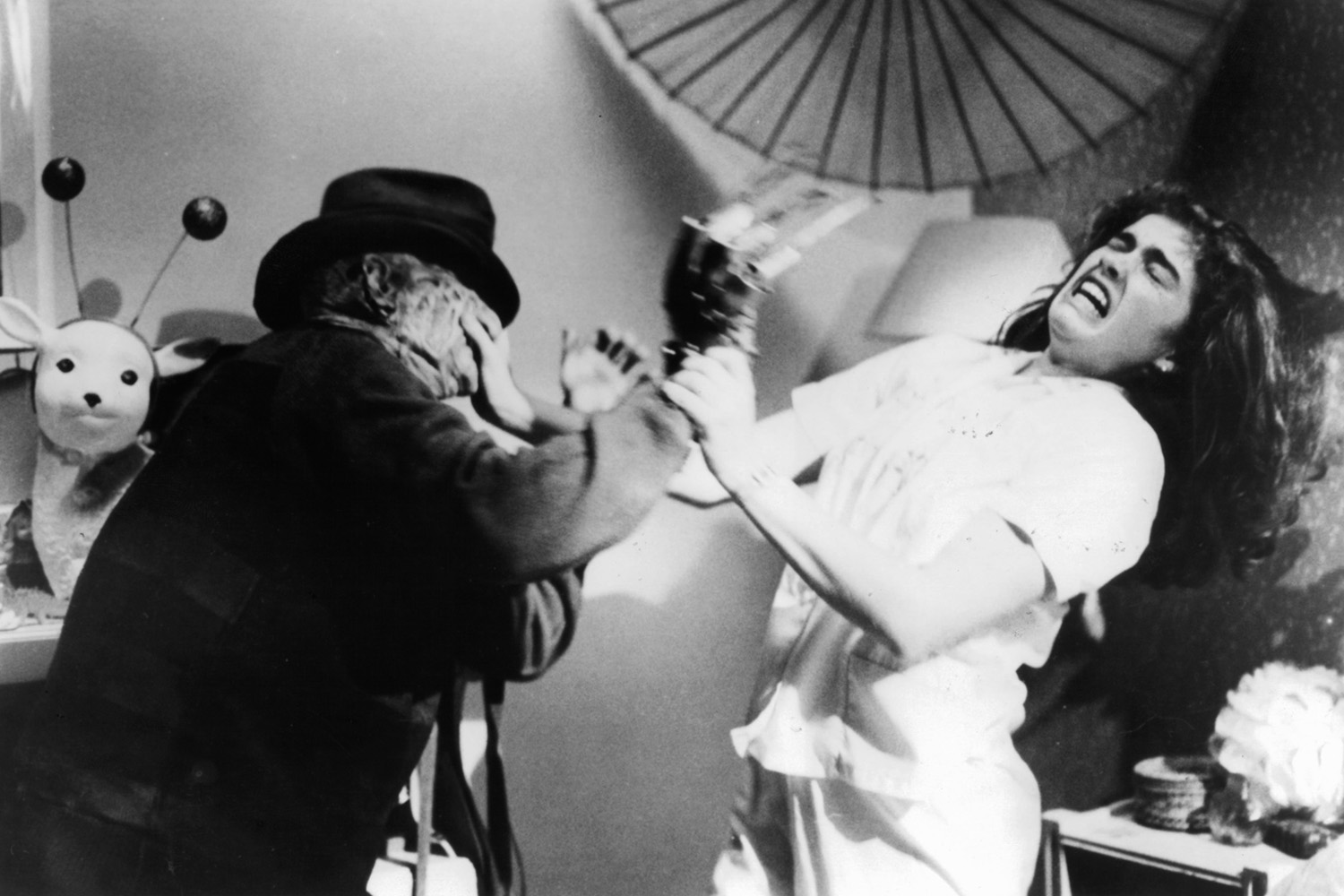
There’s a lot to unpack in horror auteur Wes Craven’s initial Nightmare – the notion that not even your dreams are safe from a killer who stalks you through your unconscious mind; and the sins of the parents being visited on their children (yes, Freddy Krueger was always an evil child-killer, but the Springwood parents made him an immortal monster by torching him vigilante-style. Finally, there’s Freddy himself, the most inventive of the first-generation of slasher villains.
His appearance is scary enough, with his burnt-off face and his razor-fingered glove. But there’s also his method of dispatching you, based on your own worst fears, and limited only by the imaginativeness of the Elm Street filmmakers. Of course, the most disturbing thing about Freddy (as played indelibly by Robert Englund in countless installments) may have been that audiences made the wisecracking killer into a folk anti-hero.
At some point in the series, you realize that you’re rooting for Freddy and against his foolish victims, who apparently haven’t seen any of the previous movies. Maybe it was a generational thing; audiences who hadn’t had Freddy haunting their nightmares for three decades didn’t seem too impressed by the 2010 reboot starring Jackie Earle Haley as Freddy. Or maybe the series had finally been bled dry of inspiration. Or maybe it was just that Craven, with his Scream movies, had thoroughly deconstructed the slasher genre and thus deprived Freddy of his power.
Warning: This clip may not be safe for work
Paranormal Activity

It’s hard to separate Oren Peli’s series from the hype that’s accumulated around it. Making the most consistently effective use of the “found footage” subgenre of horror invented by The Blair Witch Project, the PA movies have a deceptively simple premise, the video recording of inexplicable phenomena afflicting a family that moves into what turns out to be a house full of angry and mischievous poltergeists.
You’re supposed to be more than just scared; you’re also supposed to marvel at the low-budget ingenuity of the filmmakers at engineering shocks out of familiar household situations without fancy special effects. You’re even supposed to admire the marketing of the films, which managed to garner a huge following on Twitter, supposedly issuing grass-roots demands for bookings in various towns, before almost anyone had actually seen the movies.
One thing that is novel about the series is its reverse chronology, making the series a set of prequels instead of sequels, though with the fourth film, the chronology began to move forward again. A fifth film is in production and is due next October.
Warning: This clip may not be safe for work
The Ring

For many fans, there’s nothing scarier than J-horror, the recent wave of Japanese or Japanese-inspired horror movies, which can be more atmospheric and more inventive than their American counterparts. One of the scariest is The Ring, a remake of Hideo Nakata’s Ringu, which starts with an urban legend premise (a videotape that, if you watch it, you suddenly get a phone call telling you that you’ll die in exactly one week) and evolves into an elaborate ghost story.
Many of the recurring tropes of J-horror are here, from haunted-eyed children to vengeful ghosts to mysterious pools of water. The Hollywood Ring features a star-making performance by Naomi Watts as Rachel a woman trying to solve the riddle of the tape before it claims the life of her own child. She certainly proves she can scream with the best of ’em (a talent that would serve her well in King Kong).
As Samara, the abandoned child at the heart of the mystery, Daveigh Chase is probably the scariest little girl ever put on film. The story continues in The Ring 2, directed by Nakata, in which Rachel battles Samara as she possesses the body of Rachel’s son. Not as scary, perhaps, but still, the two Ring movies are the most successful J-horror translations in Hollywood history.
Warning: This clip may not be safe for work
Saw

Worst. Motivational. Speaker. Ever. John “Jigsaw” Kramer (Tobin Bell) isn’t your typical pep rally type; his way of urging people to live life to the fullest is to trap them in a dungeon with a spring-loaded trap and a hacksaw. Also, he’s dying himself, which doesn’t stop him from inspiring followers to carry on his inspirational mission.
That seems to include the fans who made this series an October goldmine for seven straight years. Like Nightmare on Elm Street‘s Freddy Krueger, the creepy captor with the clown-faced puppet mascot became something of a folk anti-hero to moviegoers, especially since his victims were often contemptible people who might have deserved, at least a little bit, to pay for their sins with a pound of flesh.
The series is generally credited with kicking off the wave of so-called “torture porn” horror (Hostel, et al) that offered catharsis by subjecting its characters (and viewers) to extremely grisly mutilations. Scholars have felt free to make connections between such films and the debased reputation of America in the Guantanamo/Abu Ghraib era; everyone else was happy merely to scream (or wince) with vicarious delight.
Warning: This clip may not be safe for work
More Must-Reads from TIME
- Where Trump 2.0 Will Differ From 1.0
- How Elon Musk Became a Kingmaker
- The Power—And Limits—of Peer Support
- The 100 Must-Read Books of 2024
- Column: If Optimism Feels Ridiculous Now, Try Hope
- The Future of Climate Action Is Trade Policy
- FX’s Say Nothing Is the Must-Watch Political Thriller of 2024
- Merle Bombardieri Is Helping People Make the Baby Decision
Contact us at letters@time.com